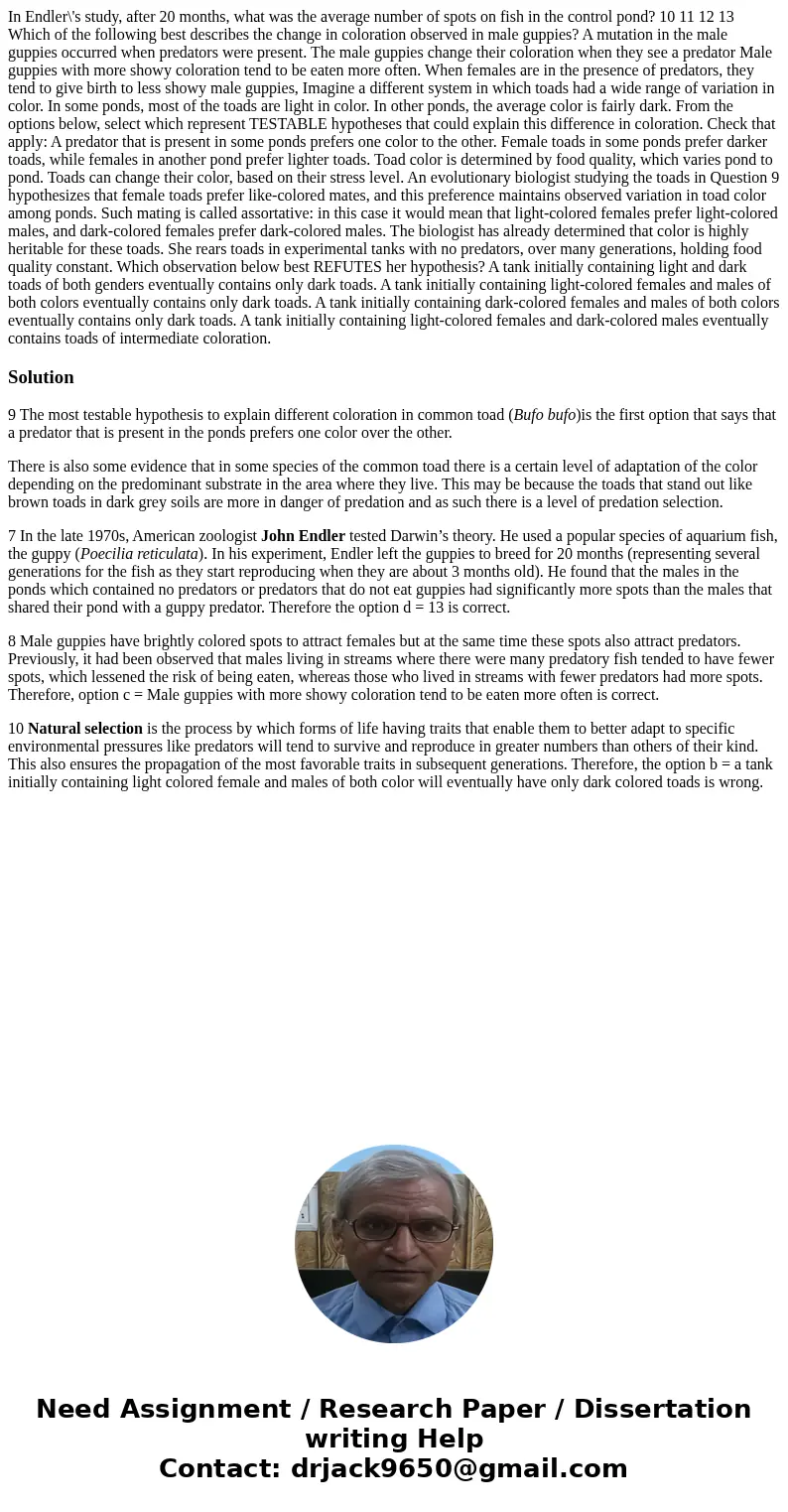In Endlers study after 20 months what was the average number
Solution
9 The most testable hypothesis to explain different coloration in common toad (Bufo bufo)is the first option that says that a predator that is present in the ponds prefers one color over the other.
There is also some evidence that in some species of the common toad there is a certain level of adaptation of the color depending on the predominant substrate in the area where they live. This may be because the toads that stand out like brown toads in dark grey soils are more in danger of predation and as such there is a level of predation selection.
7 In the late 1970s, American zoologist John Endler tested Darwin’s theory. He used a popular species of aquarium fish, the guppy (Poecilia reticulata). In his experiment, Endler left the guppies to breed for 20 months (representing several generations for the fish as they start reproducing when they are about 3 months old). He found that the males in the ponds which contained no predators or predators that do not eat guppies had significantly more spots than the males that shared their pond with a guppy predator. Therefore the option d = 13 is correct.
8 Male guppies have brightly colored spots to attract females but at the same time these spots also attract predators. Previously, it had been observed that males living in streams where there were many predatory fish tended to have fewer spots, which lessened the risk of being eaten, whereas those who lived in streams with fewer predators had more spots. Therefore, option c = Male guppies with more showy coloration tend to be eaten more often is correct.
10 Natural selection is the process by which forms of life having traits that enable them to better adapt to specific environmental pressures like predators will tend to survive and reproduce in greater numbers than others of their kind. This also ensures the propagation of the most favorable traits in subsequent generations. Therefore, the option b = a tank initially containing light colored female and males of both color will eventually have only dark colored toads is wrong.

 Homework Sourse
Homework Sourse